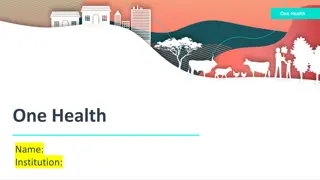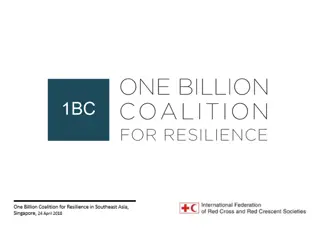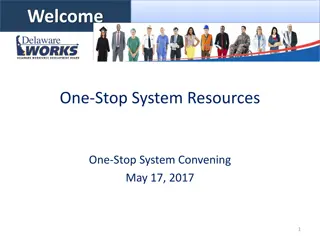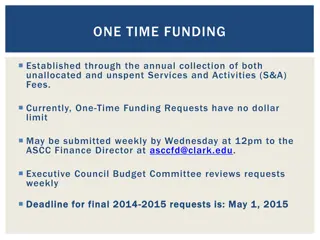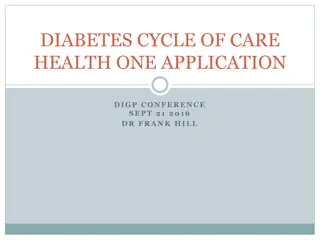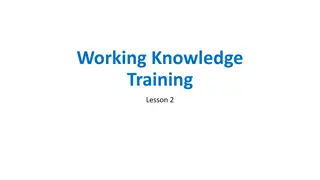
NISE Program: Revolutionizing Youth Employment and Development
Learn about the National Intelligence for Skills, Education, Employment, and Entrepreneurship (NISE) program in Bangladesh, aimed at addressing youth unemployment by connecting youths, skills providers, and industries. Discover how NISE facilitates real-time data-driven decision-making, career guidance, and industry linkage to bridge the gap in the job market. Explore the platform's features for demand-side, supply-side, policy makers, and industry associations, and its achievements at the World Summit on the Information Society.
Download Presentation

Please find below an Image/Link to download the presentation.
The content on the website is provided AS IS for your information and personal use only. It may not be sold, licensed, or shared on other websites without obtaining consent from the author. If you encounter any issues during the download, it is possible that the publisher has removed the file from their server.
You are allowed to download the files provided on this website for personal or commercial use, subject to the condition that they are used lawfully. All files are the property of their respective owners.
The content on the website is provided AS IS for your information and personal use only. It may not be sold, licensed, or shared on other websites without obtaining consent from the author.
E N D
Presentation Transcript
Youths are the best resource for a country to thrive, serving as engine for achieving development goals. On the other hand, youth unemployment thwarts the pace of development. Higher youth unemployment is not a barrier for the developing countries only, it is a common challenge alarming for the whole world, especially after the pandemic situation. Around the globe there are 621 million young people aged 15-24 years old who are not in education, employment or training and 75 million young people are trained but have no job. This crisis is also predominant in Bangladesh. The country has a total of 82 M labour force, with 2 M youth joining the force every year. youth unemployment rate is as high as 10.6% and the share of unemployed youth in total unemployment is 79.6%. Much of the workforce, especially the youths, face difficulties in finding employment as they lack information on necessary skill sets for the jobs. With the changes in the workplace and skills set demand, there is an increasing imbalance between the supply of labor and demand for skills. Context The country s current practice of supply driven trainings has led to a supply-demand mismatch as youths are unable to learn the right skills for jobs while the employers and industries are unable to find suitable human resources that they require. As a solution to this problem, a2i- Aspire to Innovate Programme, developed a one-stop data driven matchmaking platform National Intelligence for Skills, Education, Employment and Entrepreneurship (NISE) . What is NISE
To bridge the gap among the youth, the skills providers and the employers, NISE aims to- matchmake among Youth, Skills Providers, Industries contribute to achieve SDG 4 (4.3, 4.4) & SDG 8 (8.5, 8.6) facilitate real-time data driven decision making and policy formulation create central database for youth provide Career Counselling and Guidance reduce time-cost-visit (TCV) for receiving skills forecast future occupations track employment records track initiatives on 4IR Objectives
What NISE offers Demand Side Supply Side Skills Service Providers Can shift to demand driven skills development model avail services like course redesign, course enrollment, online payment, enrollment management, training center management etc. Use platform s real time data to forecast future trend in jobs and analyze job market Maintain industrial linkage Make data-driven policy and planning Youth Gets automatically registered to a central youth-database Can avail special features like counseling and guidance, job forecast, apprenticeship opportunities, business and migration suggestions, entrepreneurship guiding pathways Policy Makers Use real time data of the platform s Dynamic Dashboard, 4IR and SDG Dashboards to generate user behavior analysis reports, analyze labor market condition to make informed data-driven policy decisions Industry/ Industry Associations/ Industry Skills Council can publish job vacancy posts to targeted youth, easily sort candidates based on requirements but automatic filtering, assess candidates using features like pre-interview assessment, exam management etc. track apprenticeship activities through apprenticeship management. place demands to the skills service providers for skilled youth use Dynamic Dashboard for data-driven decisions track 4IR activities across sectors from 4IR Dashboard
Achievements Awarded at the World Summit on the Information Society Challenges frequent change in leadership at Govt Ministries/ (WSIS) Champion 2020 in the "e-Employment category by Departments and industry associations obstructed the flow International Telecommunication Union, Switzerland. of execution. Declared as a Global Best Practice by UNDP Chief Digital Office meeting customized requirements, and streamlining them (CDO) in New York in 2021 under the platform framework required multiple revisions of (https://digital.undp.org/content/digital/en/home/stories/meet the process -digital-x-s-10-ambitious-new-teams.html). digitizing previously stored manual data of the stakeholders Recognized as a Good Practice by United Nations Office for in huge quantity was a tardy process. South-South Cooperation (UNOSSC) in their latest publication of 2022 (https://www.unsouthsouth.org/2022/03/16/good- practices-in-south-south-and-triangular-cooperation-in-least- developed-countries-2022/). Replicated in Somalia as Shaqo Abuur for the skills development and decent employment of 5.32 million youths Replicated in Jordan as Digi Maharat to provide skills development, employment and entrepreneurship support to 2.8 million youths


